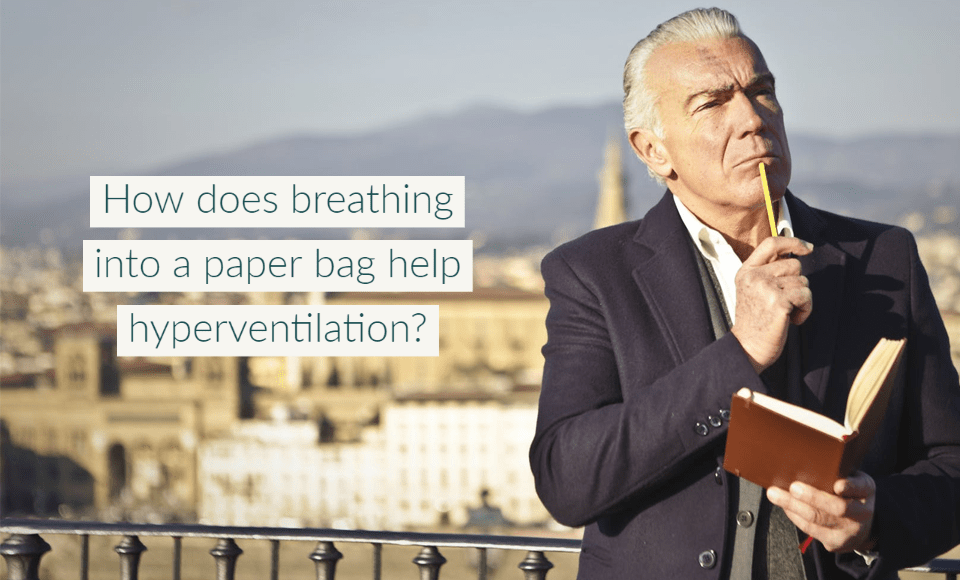
In common man terms, hyperventilation is defined as a condition in which a person breathes very fast. But in terms of the medical language, it is the state in which the rate of alveolar ventilation of carbon dioxide is greater than the body’s normal production rate of the gas.
It is a common phenomenon that is seen quite a lot in day to day life. It happens when a person gets very excited or stressed. More commonly, people with anxiety hyperventilate a lot more. It is a common problem seen in patients who get anxious while getting medical and dental treatments. Most of the time, it is left unnoticed. But sometimes, it reaches a quite significant level.
People who suffer from this problem might complain of heavy breathing. One can feel constricted and tight for a while. Generally, it is not dangerous. But sometimes, it can get out of control.
A few people hyperventilate voluntarily as well. These people are usually swimmers and yoga practitioners. It is supposed that it calms the body and prepares it for heavy work. On the other hand, involuntary hyperventilation can be triggered due to a variety of reasons. Some of them include respiratory disorders, over physical activity, reduced air pressure, and panic attacks.
One old technique to help the patients with hyperventilation is breathing into a paper bag. Many doctors around the world have been suggesting this method to their patients for a very long time. This paper bag technique is now considered as a readymade solution for hyperventilation, just like a bandage for a wound.
But the question here is how breathing into a bag helps in slowing down the rapid breathing? To understand this process, we must know what happens when a person hyperventilates. And what is the blood’s reaction to this whole mechanism?
Well, the phenomenon of hyperventilation depends upon the blood’s acid levels. The acidity levels of any fluids are determined by its pH value. And the pH value is calculated using a pH scale.
On a pH scale, there are 14 numbers, 1 through 14. The number 7 in the middle denotes a neutral fluid while the extremes denote acid and basic fluids. With number 1 being highly acidic, to number 14 being highly basic.
Now that we have established the concept of pH values let’s consider the blood and its mechanisms. The pH value of blood is 7.4, meaning it to be slightly basic. When a person hyperventilates, he takes in more oxygen, and his blood becomes more basic. As a result, the levels of carbon dioxide in his body fall. This sudden fall of carbon dioxide produces a state that is known as hypocapnia.
The blood carries carbon dioxide in the form of bicarbonates. The hydrogen ions in blood combine with the bicarbonates to compensate for the drop in carbon dioxide. They do so in the state of hyperventilationto free more carbon dioxide. This process results in the loss of hydrogen ions. Moreover, it produces a further increase in the already-alkaline-nature of the blood, hence leading to a condition known as respiratory alkalosis.
Respiratory alkalosis is a condition that is the root of several problems — for example, constriction of blood vessels and reduction in calcium levels in the blood. Patients suffering from this problem would feel dizziness, headache, and seizures.
The idea behind breathing into a bag is re-breathing our exhaled carbon dioxide. When carbon dioxide enters the bloodstream, it is supposed to balance the pH value.But despite its widespread practice, the latest studies have come up with strong advice against this technique. The main reason for such a move was the ambiguity in the matter. Often the symptoms of asthma and heart attack get confused with those of hyperventilation.
In those times, breathing into a bag can raise the level of carbon dioxide in the bloodstream, and it could prove to be fatal. There have been a number of such cases in the recent past. Thus, this technique is obsolete now.
Many doctors are now recommending alternative breathing exercises or using an open tube instead. Those who rely on the paper bag method are advised not to do it continuously.
